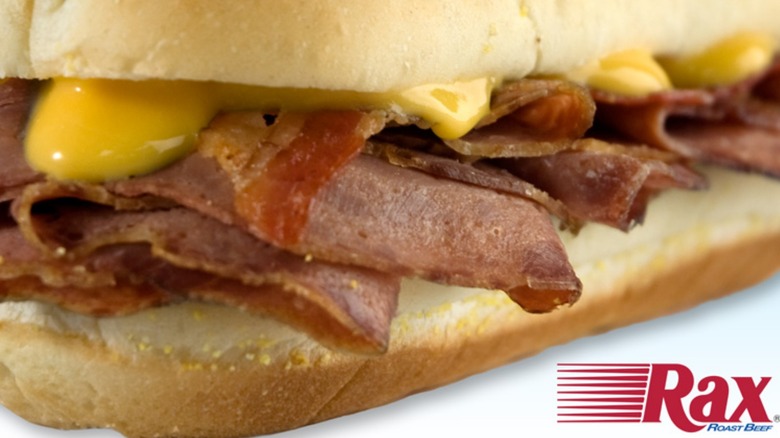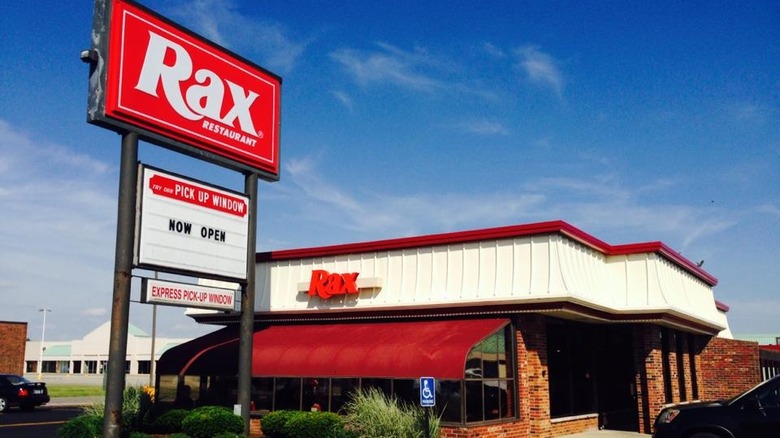The Story Behind The Rise And Fall Of Rax Roast Beef
There's an old saying that goes like this: "Throw it to the wall and see what sticks." It refers to a specific approach to ideas or products, the concept of throwing caution to the wind and putting everything on the line. It's shooting into the dark, hoping that somehow, someway you're going to hit the target and make it big. It's taking the biggest risks you can, even if it means going totally outside what you're actually supposed to be selling. Perhaps no other company is a better example of such a free-wheeling approach to business than Rax Roast Beef.
If you've never heard of Rax, you're probably not alone. There's only a handful of Rax restaurants still in operation around the United States, and even then, they're pretty obscure. At one time, however, way back in the weird and wonderful zenith of the 1980s, Rax Roast Beef was almost as big as fellow roast beef purveyor Arby's (via WRKR). According to Weird Marketing, Rax Roast Beef, founded in Ohio in 1967, once had over 500 restaurants across 38 states, even having a few locations in Guatemala. For a restaurant that focused primarily on roast beef, this was certainly nothing short of an impressive achievement.
But how could a company that once had 500 restaurants across the United States suddenly collapse? How could a once well-known restaurant chain fade from the public consciousness so quickly that the few sources who know about it speak of it as if it's some long-dead relic from a by-gone era?
Rax lost focus on what it was doing
As 12 Tomatoes explains, Rax began to shift focus from selling roast beef to various other cuisines. This involved the installation of a salad bar and the addition of pizza, Chinese food, and, according to one commercial, "taco pockets" — none of which had anything to do with roast beef. Even more bizarre was Rax's attempts to rebrand itself as a high-class place to eat fast food. This meant a total overhaul of their restaurants, remodeling the dining areas with solariums and fancy wood paneling. The result was two-fold: Not only did this 'high-class" image drive away a loyal working-class customer model, but in a shocking twist, no one associates a fancy night out with Chinese food from a roast beef restaurant.
Then came Mr. Delicious. While fast food mascots at the time were colorful and outright fantastical, Mr. Delicious was entirely different. The monochrome suit-wearing character regaled audiences with uncomfortable stories about his miserable love life, jarring innuendos, and the blunt, sterile reminder that "yes, you can eat at Rax." According to Rax, the idea behind "Mr. D" was that his controversial attitude of neurotic self-loathing and misery would help bring in customers. Needless to say, this approach didn't work well.
Having driven away a customer base with unneeded style changes and a failed "adult-friendly" mascot, Rax Roast Beef folded to only six remaining locations, cementing itself as a fast food chain that became a huge failure in the end.

